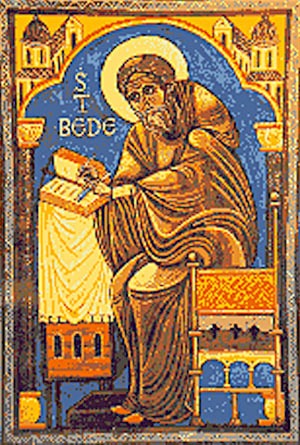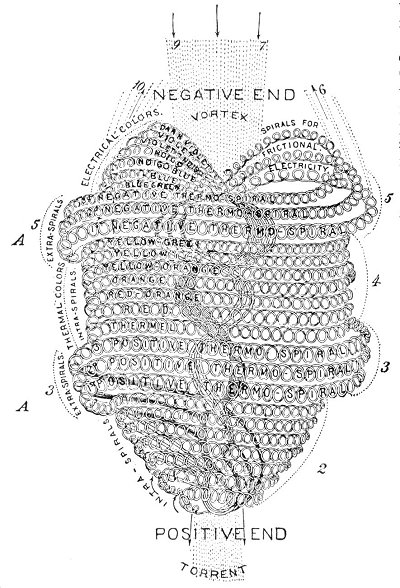In the same year the Council of Hertford, the first English provincial council, is held, and marks the strength and independence of the Church. Theodore proceeds with his reforms in the episcopate. Various events of ecclesiastical importance follow; the East Anglian diocese is divided about this time, and other changes are effected.
Essex, so long prone to lapses into paganism, becomes at this time a centre of religious life under its Bishop Earconwald and its king Sebbi. Earconwald, whose holiness is attested by many miraculous circumstances, was the founder of the monasteries of Chertsey and Barking, the latter of which was ruled by his sister, the saintly Ethelburg. Various miracles are related in connection with her and her monastery. The king of the East Saxons, Sebbi, is a man of unusual piety who resigns his kingdom and receives the tonsure.
After a brief allusion to West Saxon history, the devastation of Kent by Ethelred of Mercia in 676, and certain changes in the episcopate, we come to an important step in the organization of the Church taken by Theodore. In pursuance of his policy of increasing the number of bishops, he subdivides the great Northumbrian diocese. Wilfrid is expelled (678 AD.). From these events we pass summarily to the evangelization of the South Saxons by Wilfrid, who extends his labours to the Isle of Wight, and thus the last of the English provinces is won for the faith.
In the Council of Hatfield (68o A.D.) the English Church asserts its orthodoxy and unites with the continental Churches in repudiating the heresy of the Monothelites. Turning to Northumbrian history, we have the story of Egfrid’s queen, Ethelthryth, and a hymn composed in her honour by Bede. The war between Mercia and Northumbria in 679 is ended by the mediation of Theodore, and a miracle in connection with the battle of the Trent is related.
The remainder of the book is occupied mainly with Northumbrian history, the life and death of Hilda, Abbess of Whitby, the story of the poet Caedmon, the destruction of Coldingham, prophesied by the monk Adamnan, Egfrid’s invasion of Ireland (684 A.D.) and of the country of the Picts (685 A.D.), his defeat and death in that year, the decline of Northumbria, the flight of Bishop Trumwine from Abercorn, and the succession of Aldfrid to the kingdom. The death of Hlothere of Kent (685 A.D.) is followed by anarchy in that province, till Wictred succeeds and restores peace.
In Chapters 27-32 we have an account of the life of St. Cuthbert and stories of the miracles wrought by his relics.
Book V.—Book V opens with the story of the holy Ethelwald, who succeeded Cuthbert as anchorite at Fame, and a miracle wrought through his intercession. This is followed (cc. 2-6) by an account of John of Beverley, Bishop of Hexham, and the miracles attributed to him. In Chapter 7 we have a piece of West Saxon history: Caedwalla, King of Wessex, after a life of war and bloodshed, goes to Rome to receive baptism there, and dies immediately after his admission into the Church(689 A.D.). He is succeeded by Ini, who in 725 likewise ended his days at Rome.
In 690 Theodore dies, after an episcopate of twenty-two years. Bertwald succeeds him at Canterbury in 693.
At this time Englishmen begin to extend their missionary enterprise abroad. Various missions are undertaken by men who have lived long in Ireland and caught the Celtic zeal for the work of evangelization. The story is told of the attempted mission of Egbert to Germany and the unsuccessful venture of Witbert. Wilbrord (in 690) and others plant the faith among the German tribes.
The vision of Drytheim is inserted here, probably on chronological grounds (“his temporibus”), and other visions of the future world follow.
Apparently about the same time a change is effected in the attitude of the greater part of the Celtic Church towards the Paschal question. The Northern Irish are converted to the Roman usages by Adamnan, Abbot of lona, whose book on the “Holy Places” is here described.
The death of Aldfrid and succession of Osred in Northumbria in 705 are the next events narrated.
About this time the division of the West Saxon diocese is carried out, Aldhelm being appointed to Sherborne and Daniel to Winchester; the South Saxons receive a bishop of their own for the first time. In 709 A.D. Coenred of Mercia and Offa of Essex receive the tonsure at Rome, and in the same year Bishop Wilfrid dies. The story of his life is told.

Moe is the founder of GnosticWarrior.com. He is a father, husband, author, martial arts black belt, and an expert in Gnosticism, the occult, and esotericism.




